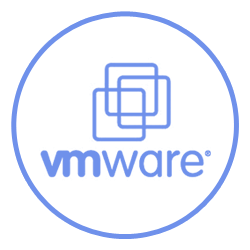-
Welcome to My Website
This is a text box. Write your own content here. This is an excellent place for you to add a paragraph.
Netway Support Center
เราพร้อมบริการคุณ ตลอด 24 ชั่วโมง
Payment & Invoices
Products Knowledge










Zendesk




Other Cloud Products
Technical Knowledge
Website/Install Application & FTP
Linux Technical Knowledge
Windows Technical Knowledge
Database
Blog list (8)
Renaming database tables with phpMyAdmin
Renaming database tables with phpMyAdmin This video assumes you've already logged in to phpMyAdmin. Now let's learn how to rename a database table. First, select the database where the table exists... ... then click the table you want to rename. Click the Operations tab. Under Table Options, in the Rename table to section, enter a new name for the table, then click Go. That's it! The table has been renamed, as can be seen here in the left pane. This is the end of the tutorial. You now know how to rename a database table with phpMyAdmin.
Deleting a table from a database with phpMyAdmin
Deleting a table from a database with phpMyAdmin This video assumes you've already logged in to phpMyAdmin. Now let's learn how to delete a database table. First, select the database where the table exists. Select the table by checking its checkbox... ... then click Drop. Click OK to confirm. That's it! The table has been deleted, as well as all fields and data within the table. This is the end of the tutorial. You now know how to delete a database table with phpMyAdmin.
Exporting databases and tables with phpMyAdmin
Exporting databases and tables with phpMyAdminThis video assumes you've already logged in to phpMyAdmin.Now let's learn how to export databases and tables.First, select the database you want to export...... then click the Export tab.If you want to export the entire database including all tables within, leave the Quick export method selected.In this case we want to export the database in SQL format so we can easily import it later. This is a good way to back up your database.When ready, click the Go button.A complete copy of your database will be downloaded to your computer.If you want more options before exporting, click the Custom export method.Here we can select which tables to include...... and we can rename our exported file .There are many other options we could choose, but in most cases we'll just want to keep the defaults.When ready, click Go.That's it! A copy of your database will be downloaded to your computer, as per the options you chose.This is the end of the tutorial. You now know how to export databases and tables with phpMyAdmin.
Importing databases and tables with phpMyAdmin
Importing databases and tables with phpMyAdmin This video assumes you've already logged in to phpMyAdmin. Now let's learn how to import databases and tables. First, select the database you want to import. Let's assume the data in our details table is corrupt, and we want to import a recent backup (or exported copy). Therefore, let's first delete the existing details table from the database. Now let's import the recently exported copy of our database, which includes the details table. Click the Import tab... ... then click Choose File and locate the file we want to import. When ready, click Go. That's it! The database has been successfully imported. We can see here that our details table has been restored. This is the end of the tutorial. You now know how to import databases and tables with phpMyAdmin.
Running SQL queries on a database with phpMyAdmin
Running SQL queries on a database with phpMyAdminThis video assumes you've already logged in to phpMyAdmin.Now let's learn how to run SQL queries on a database.First, select the database you want to run a query on...As demonstrated in another video, you can delete (or drop) a field from a table by selecting it...... then clicking the Drop icon.In this video however, we're going to demonstrate how to delete this field using pure SQL commands.Click the database name, then click the SQL tab.Type the SQL command to delete the address field, then click Go.That's it! The SQL command has been executed successfully.The address field is no longer in our database table.You can also click the SQL tab directly from the table view (instead of from the database view which is what we did).Doing so presents an SQL query window that is partially filled in.For more information on learning about SQL query syntax, visit the MySQL documentation page.This is the end of the tutorial. You now know how to run SQL queries on a database with phpMyAdmin.
-
Domain
-
Hosting
-
Cloud & Managed
-
SSL
-
Email
- เรียนรู้เพิ่มเติม
- Microsoft 365 รุ่นต่างๆ
- Microsoft 365 สำหรับธุรกิจ
- Microsoft 365 สำหรับใช้งานที่บ้าน
- ทดลองฟรี
- G Suite
- เทคนิคลดต้นทุนอีเมล Microsoft 365 มากกว่า 28%
- เทคนิคลดต้นทุนอีเมล G Suite มากกว่า 19%
- Zimbra-Based Email
- Traditional Email by cPanel
- Physical to Cloud Migration
- Exchange Server to Microsoft 365 Migration
- G Suite to Microsoft 365 Migration
- Microsoft 365 to G Suite Migration
- Cloud to Cloud Migration
-
Microsoft
-
Google
-
Marketing
-
Others
-
Blog
-
Microsoft Teams
-
microsoft-365-business-premium
-
test-slide
-
Order
-
Promo






















.png)



.png)














